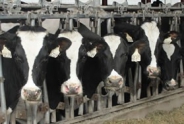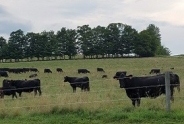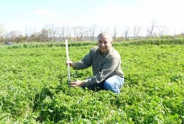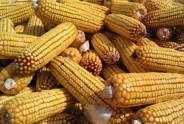Field Crop Update, July 27, 2023
Erik Smith, Area Field Crop Specialist/Team Leader
Central New York Dairy and Field Crops
1. Field Observations
At this point, I'm now seeing tassels in more than half the fields I come across throughout our region. So in preparation of corn silage harvest, we'll start tracking growing degree days from tasseling (Section 2).
Corn and soybean crops continue to look good, with low pest and disease levels so far, but this rain and humidity means that diseases are just around the corner. So now is the time to protect your soybeans from white mold (if you haven't started already) in high-risk fields as they are flowering and as canopies close.
Potato leafhopper numbers in alfalfa are continuing to elevate in some areas, particularly the southern parts of our region (section 3).
Western bean cutworm numbers continue to be higher than they have been in previous years. They are most attracted to pre-tassel corn, so hopefully we are exiting the highest-risk period for this pest.
But now is the time when perennial hayfield weeds start to make themselves known. Here is a great article from Penn State on Perennial Weed Control in Grass Forages (psu.edu)
And as you and your staff work outside over the next few days, STAY HYDRATED:
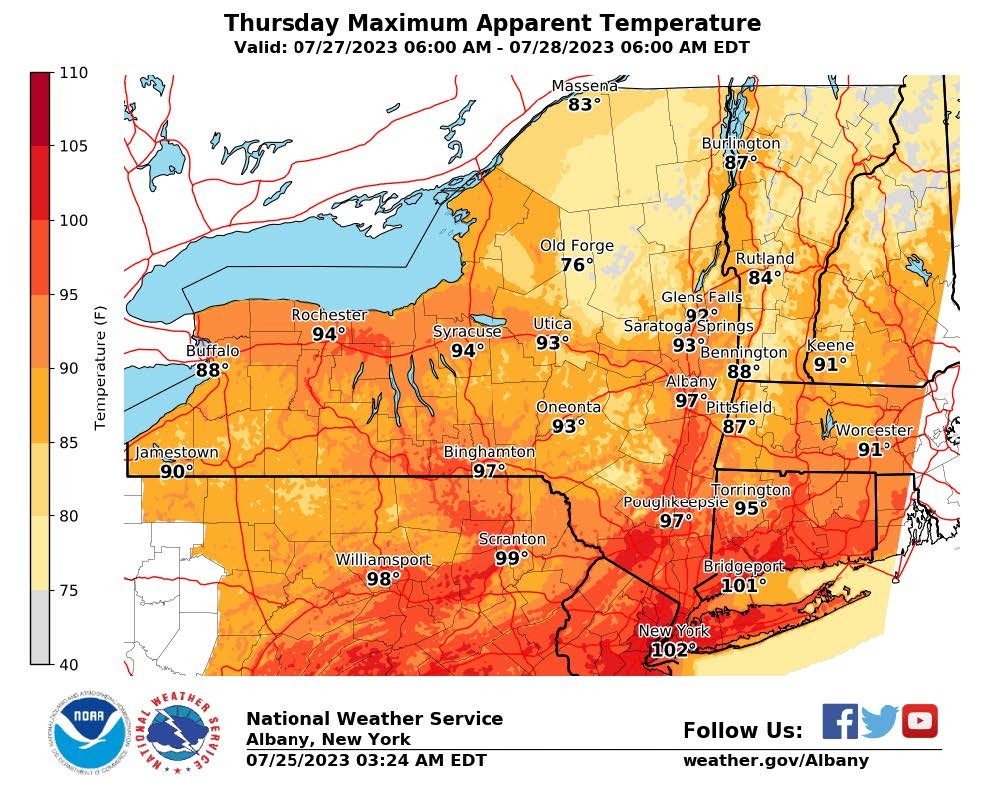
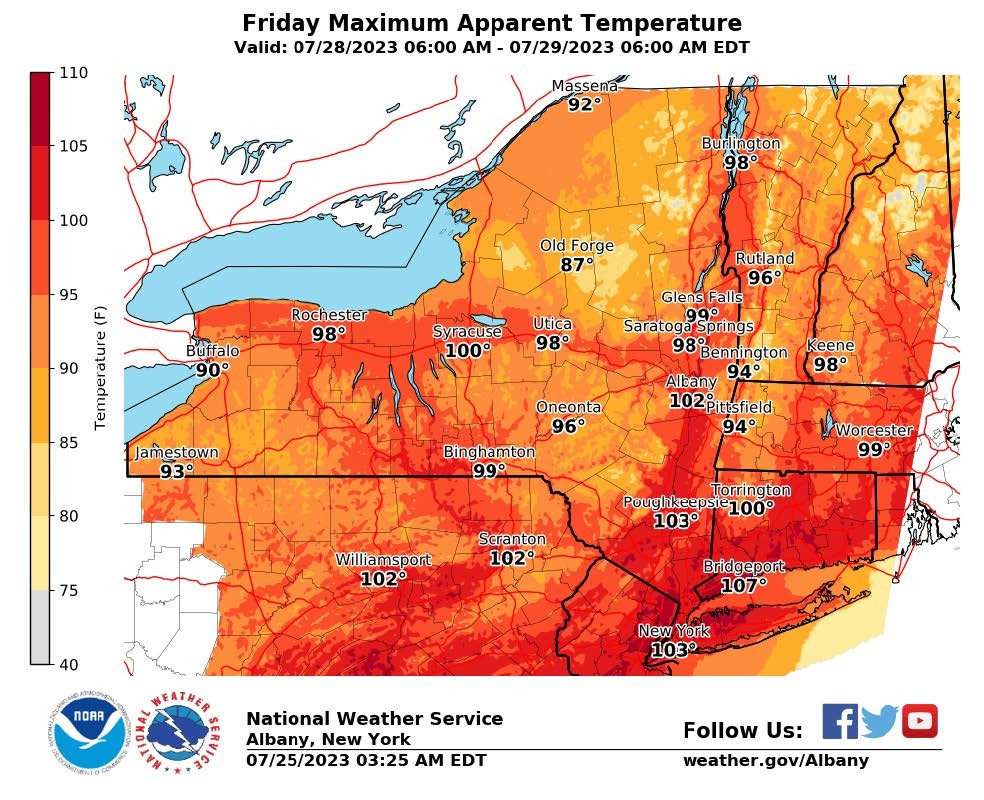
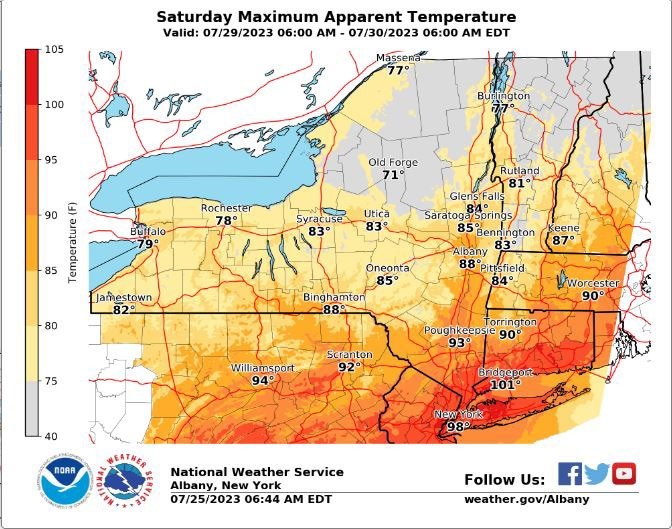
2. Growing Degree Days (See: Climate Smart Farming Growing Degree Day Calculator)
Growing degree days (GDD) are calculated by taking the average daily temperature and subtracting the base temperature for development of a given organism ((High + Low)/2 - base temp = GDD). For corn, we are using base 50/86, as corn development starts at 50 degrees F and ceases above 86. Check your location, planting date, and silking date. Silage corn needs 750-800 GDD (depending on hybrid maturity) after silking to reach a whole plant DM of 32%. Under typical late season dry down conditions we can expect the crop to reach 35% DM four to seven days later (Remember that we can expect to accumulate 20-25 GDD per day, or even up to 30, so this is not a large window). For more details, see this article. No matter what the numbers say, always check your crop to see how close you may be to harvest:
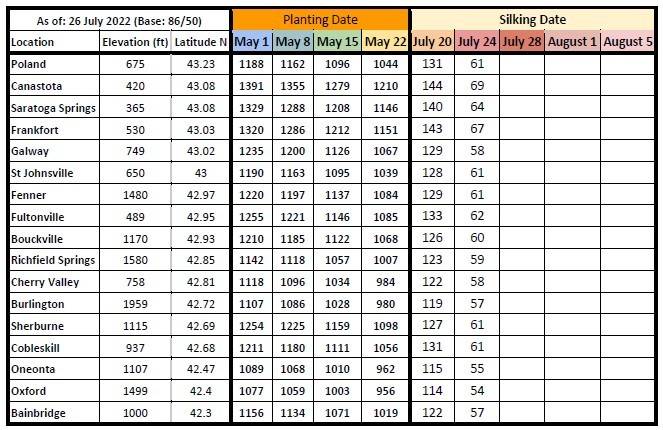
3. Pest and disease monitoring
Western Bean Cutworm (WBC) and Fall Armyworm (FAW) in corn
WBC is hot out of the gate across our region. I scouted the Chenango Co. field with the highest number for WBC egg masses (they prefer to lay eggs on the top surface of the uppermost leaves) but found none. Something to keep an eye on….
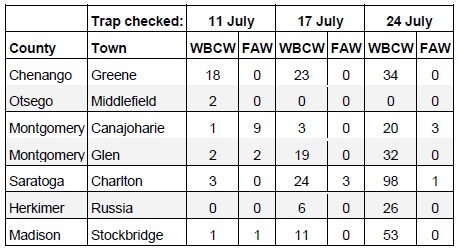
Potato leafhopper (PLH) in alfalfa - Fields sampled by Ashley Bound and Emily Anderson (CCE Chenango), working with local FFA chapters across our region to sweep alfalfa fields this year (funding provided by the Chobani Community Impact Fund):
Action thresholds are determined by comparing average crop height and average number of potato leafhoppers per sweep (3 sets of 10 sweeps in different parts of the field) using a 15" diameter sweep net.
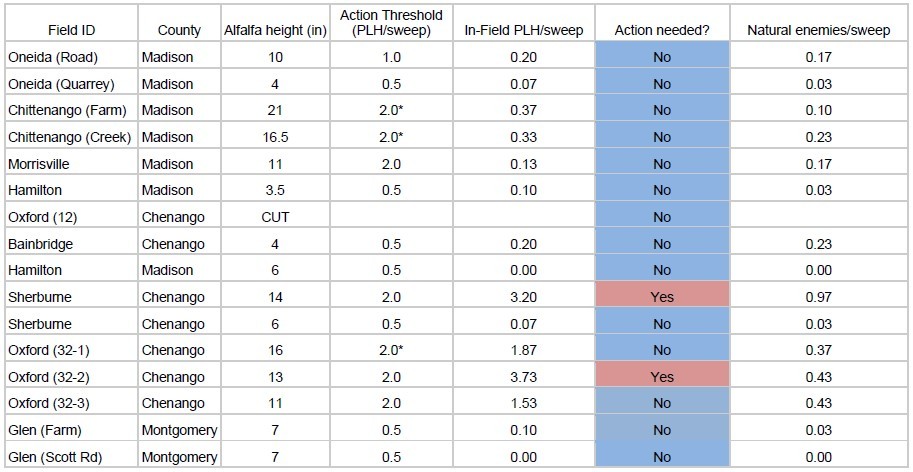
*No action needed if crop is within 1 week of cutting. If not, use a short-residual insecticide.
Upcoming Events
Labor Roadshow IX
December 1, 2025
December 9 - December 10, 2025December 17 - December 18, 2025December 22, 2025
In-person and online events to keep NY's agricultural employers informed and prepared for today's labor challenges.
2026 Dairy Day
January 13, 2026 : Dairy Day - Hamilton
Hamilton, NY
Lunch included
January 14, 2026 : Dairy Day - Ballston Spa
Ballston Spa, NY
Lunch included
2026 Corn & Soybean Day
January 20, 2026 : Corn & Soybean Day - Hamilton
Hamilton, NY
Lunch included. 2.75 DEC Credits available
January 21, 2026 : Corn & Soybean Day - Ballston Spa
Ballston Spa, NY
Lunch included. 2.75 DEC Credits available
Announcements
Statewide Field Crop Pathology Needs Assessment Survey
Your input is wanted for identifying priorities!Sign Up for Our Weekly E-Newsletter
We send out a bi-weekly e-newsletter that has announcements, upcoming programs, and opportunities for you! Registration is quick, easy, and free. Click here to sign up today!Farmers Can Join MeatSuite For Free!
MeatSuite.com is a free resource provided by Cornell University where NY meat farmers can create a farm profile and list their bulk (wholes, halves, quarters) and bundled (i.e. Grilling Bundle) meat products.Why should farmers join?
1. It's free and easy!
2. Connect with more local customers. In the past year the MeatSuite.com farm directory had 8,300 visits from New York consumers. Farm profiles get as many as 25 views per month from potential local customers. We also spotlight MeatSuite farms on social media and bring attention and purchases to farms through highlights and giveaways.
How do I join?
Farmers can visit https://www.meatsuite.com/farmers/ to create a free farm profile. You must list at least one product for your farm's profile to go live. You'll also have access to Cornell's free Meat Price Calculator, a helpful tool for pricing your meat to make a profit.
While you're on MeatSuite, check out the "Creating Consumer-Friendly Bulk Meats" publication on the log-in page. It has tips on how to create bulk meat products that are easier for first-time buyers to say "yes" to.
If you have any questions as you create your farm profile or products, we're here to help! Please email Matt LeRoux at mnl28@cornell.edu.

